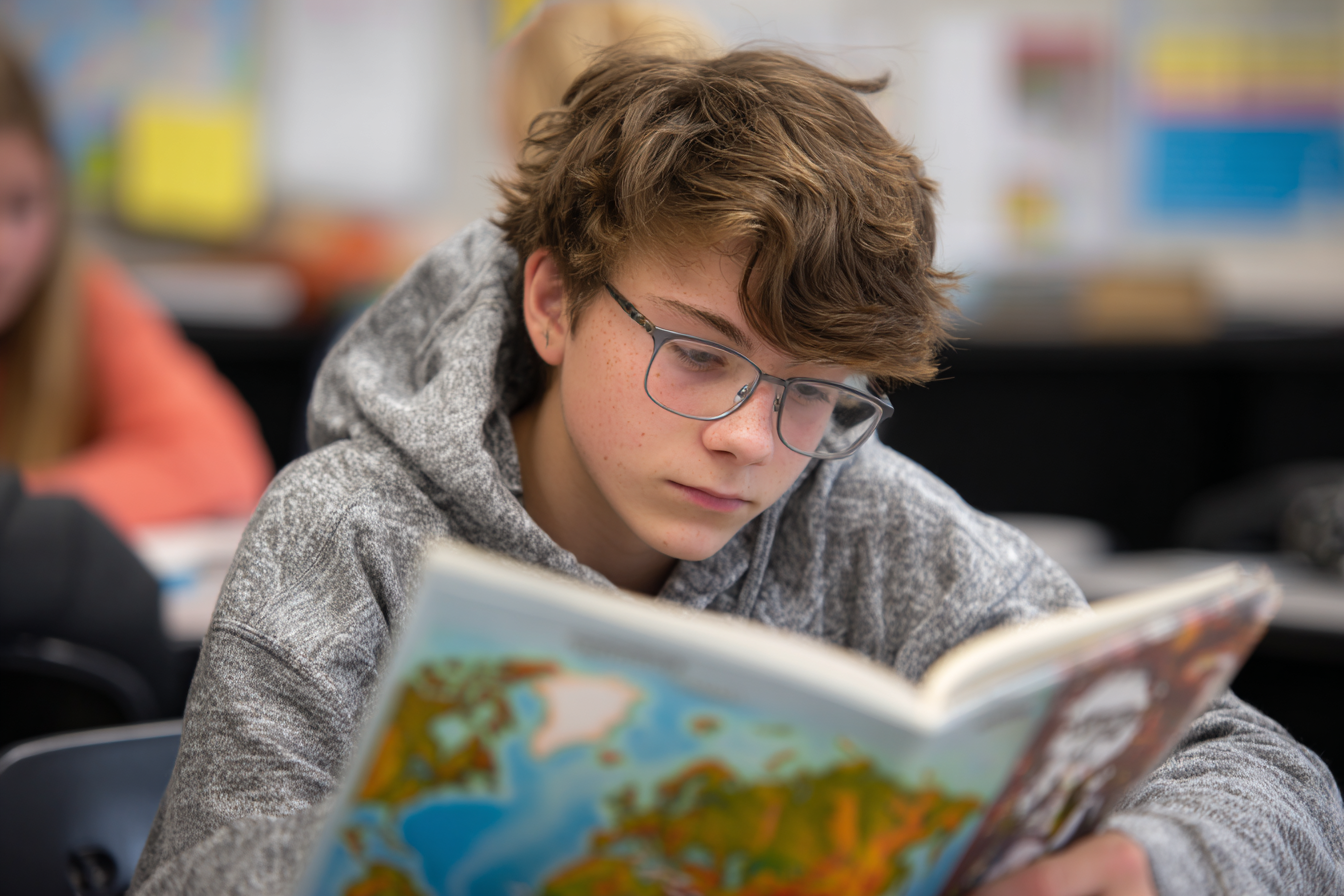Unit Plan 14 (Grade 7 ELA): Poetry Craft – Figurative Language & Imagery
Grade 7 ELA unit: students explore how poets use figurative language, imagery, and structure to shape tone and meaning. Through close reading, annotation, and short explications, they connect poetic craft to theme, analyzing how word choice and form create emotional and intellectual impact.

Focus: Figurative language; imagery; structure and meaning
Grade Level: 7
Subject Area: English Language Arts (Reading Literature; Language—Vocabulary & Nuance)
Total Unit Duration: 5 sessions (one week), 50–60 minutes per session
I. Introduction
Poetry compresses meaning into precise words, images, and structures. This week, students learn how figurative language (simile, metaphor, personification, hyperbole), imagery (sensory details), and poetic structure (line breaks, stanzas, repetition, rhyme, rhythm, free verse) shape tone and meaning. They’ll annotate, paraphrase, and write short explications that connect craft moves → effect → theme with clear textual evidence.
II. Objectives and Standards
Learning Objectives — Students will be able to…
- Determine the meaning of words and phrases in poems, including figurative and connotative meanings; explain how diction shapes tone and meaning (RL.7.4).
- Analyze how a poem’s form/structure (line breaks, stanza pattern, rhyme/rhythm, repetition/refrain, free verse) contributes to overall meaning and theme (RL.7.5).
- Interpret figures of speech in context (e.g., metaphor, personification), use word relationships to clarify meaning, and distinguish among connotations of near-synonyms (L.7.5a–c).
Standards Alignment — CCSS Grade 7
- Reading Literature 7.4 (RL.7.4): Word choice, figurative language, connotation, and their impact on meaning/tone.
- Reading Literature 7.5 (RL.7.5): Analysis of poetic form and structure and how these contribute to meaning.
- Language 7.5a–c (L.7.5a–c): Interpret figures of speech; use word relationships; distinguish connotations.
Success Criteria — student language
- I can identify and interpret a poet’s figurative language accurately, using text lines in my explanation.
- I can explain how imagery builds tone and meaning.
- I can show how structure (line breaks, repetition, stanza choice) changes emphasis or meaning.
- I can choose between near-synonyms to match a poem’s tone and connotation.
